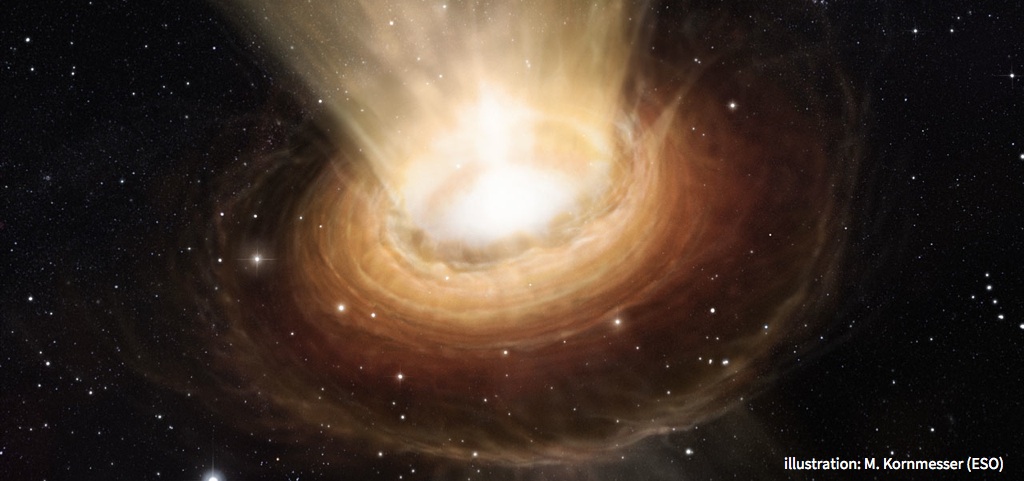Dusty Surprise Around Giant Black Hole
Dust in the polar region as a major contributor to the IR emission in AGN
(Hoenig et al. 2013, ApJ, 771, 78)

Abstract
Dust around active galactic nuclei (AGN) is distributed over a wide range of spatial scales and can be observed in the infrared (IR). It is generally assumed that the distribution on parsec scales forms a geometrically- and optically-thick entity in the equatorial plane around the accretion disk and broad-line region – dubbed “dust torus” – that emits the bulk of the sub-arcsecond-scale IR emission and gives rise to orientation-dependent obscuration. However, recent IR interferometry studies with unprecedented position angle and baseline coverage on these small scales in two obscured (type 2) AGN have revealed that the majority of the mid-IR emission in these objects is elongated in polar direction. These observations are difficult to reconcile with the standard interpretation that most of the parsec-scale mid-IR emission in AGN originates from the torus and challenges the justification of using simple torus models to model the broad-band IR emission. Here we report detailed interferometry observations of the unobscured (type 1) AGN in NGC 3783 that allow us to constrain the size, elongation, and direction of the mid-IR emission with high accuracy. The mid-IR emission is characterized by a strong elongation toward position angle PA −52°, closely aligned with the polar axis (PA −45°). We determine half-light radii along the major and minor axes at 12.5 μm of (20.0 ± 3.0) mas x (6.7 ± 1.0) mas or (4.23 ± 0.63) pc x (1.42 ± 0.21) pc, which corresponds to intrinsically-scaled sizes of (69.4±10.8) rin x (23.3±3.5) rin for the inner dust radius of rin = 0.061 pc as inferred from near-IR reverberation mapping. This implies an axis ratio of 3:1, with about 60−90% of the 8 − 13 μm emission associated with the polar-elongated component. It is quite likely that the hot-dust emission as recently resolved by near-IR interferometry is misaligned with the mid-IR emitting source, which also finds a correspondence in the two distinct 3−5 μm and 20 μm bumps seen in the high-angular resolution spectral energy distribution (SED). Based on this SED, we determine covering factors for the hot and warm dust components of Chot = 0.42+0.42−0.21 and Cwarm = 0.92+0.92−0.46, respectively. We conclude that these observations support a scenario that the majority of the mid-IR emission in Seyfert AGN originates from a dusty wind in the polar region of the AGN.
Authors: S. F. Hoenig, M. Kishimoto, K. Tristram, M. A. Prieto, P. Gandhi, D. Asmus, R. Antonucci, L. Burtscher, W. J. Duschl, & G. Weigelt
Press Releases
Dusty Surprise Around Giant Black Hole
Main release by the European Southern Observatory (ESO)Dusty black holes could affect galaxy growth, scientists say
Durham University